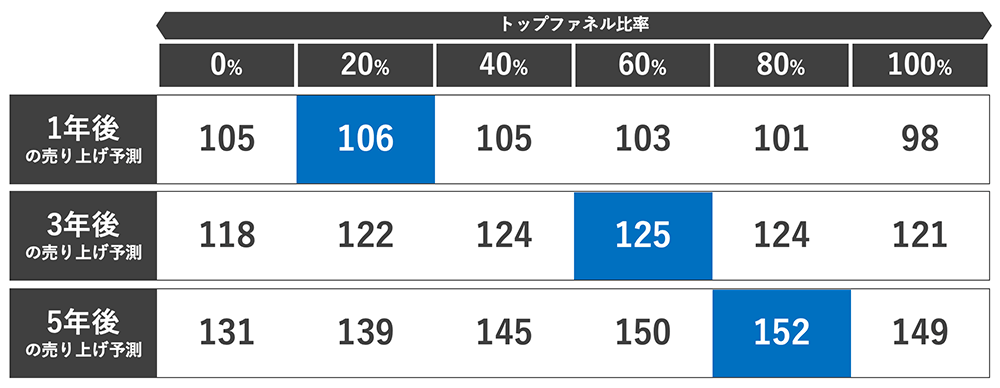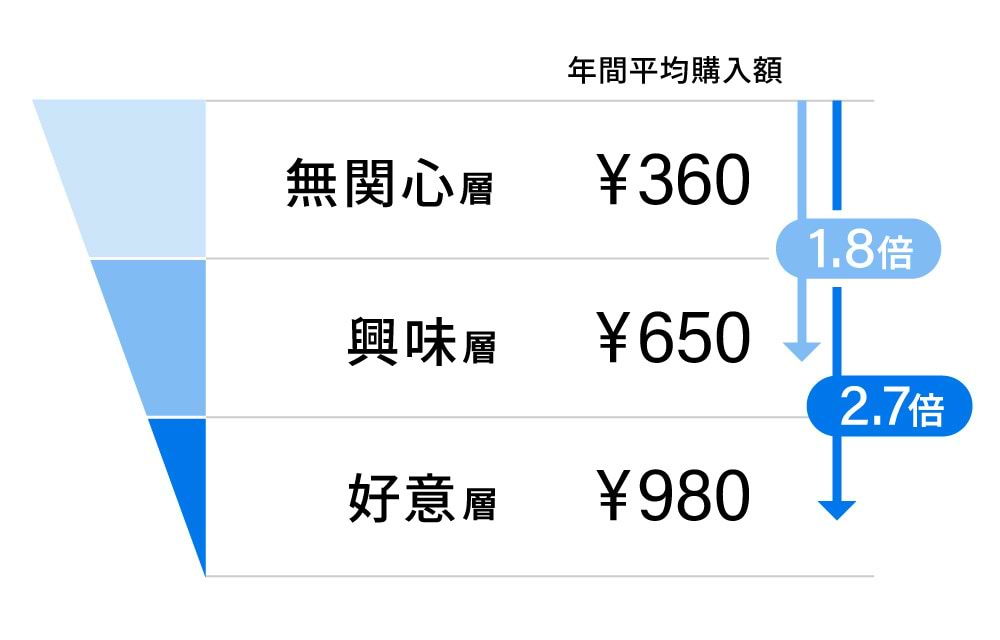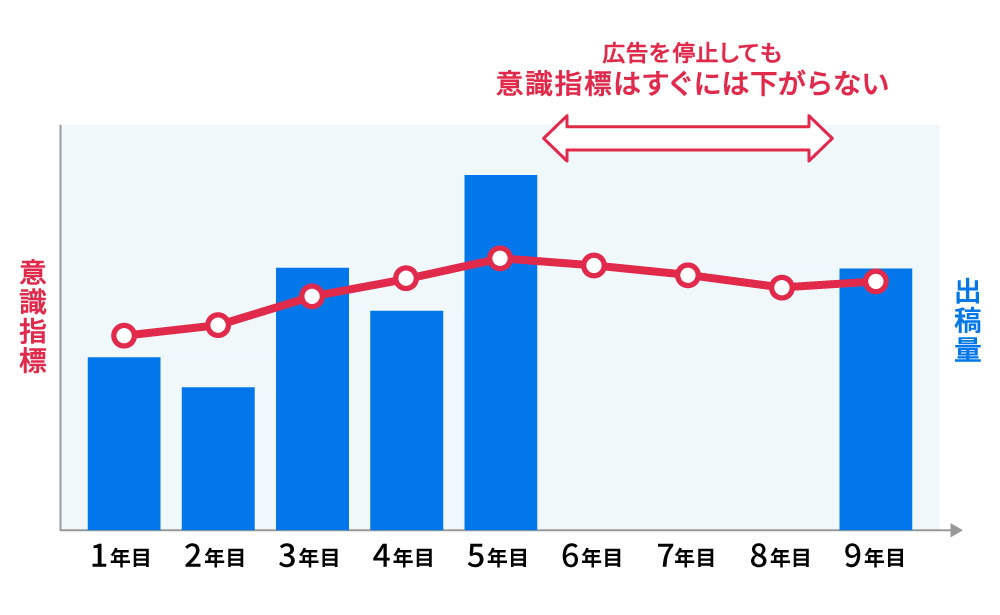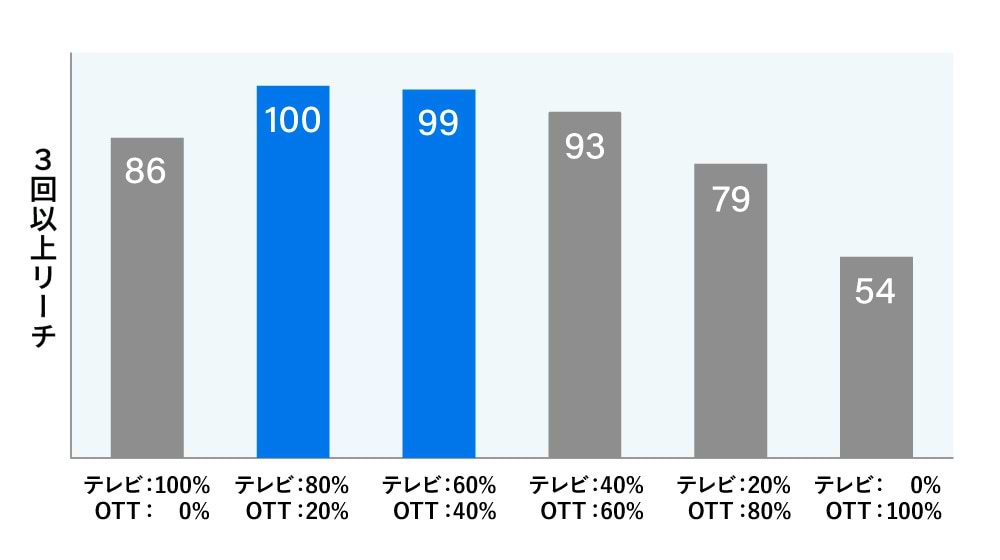Note: This website was automatically translated, so some terms or nuances may not be completely accurate.
Why are TV commercials effective for mid-to-long-term business growth?
This series will explain how to effectively utilize TV commercials based on advertisers' KPIs and challenges.
"Since the effects aren't immediately apparent, isn't TV advertising unnecessary?" "Does improving awareness and favorability of products or services truly lead to sales?" These are points that often come up when considering media planning, including TV commercials.
In the previous article , we highlighted one scenario where advertisers should consider using TV commercials: "When aiming for product or service growth, especially with a three-year or longer outlook." This time, we delve deeper into this point. Dentsu Inc. media planner Hiroshi Yamazaki explains how to leverage TV for mid-to-long-term business growth strategies, using real-world examples.
In my daily media planning work, I focus heavily on "how to connect advertising to business results," engaging in the planning, execution, and verification process. To realize this process, accurately measuring advertising's contribution to business results becomes critical. Particularly when utilizing TV commercials, a flawed measurement approach risks misallocating advertising investment, potentially losing customers and sales that could have been acquired. In recent years, advertising analysis and planning tools have proliferated, creating an environment increasingly capable of sophisticated effectiveness verification. For example, it is now possible to cross-reference TV and digital video exposure data with client sales data to visualize how each medium contributed to business outcomes and sales. However, if the measurement methods and approaches for business outcomes are not tailored to the characteristics of the category If you don't tailor your approach to the characteristics of the goal, you may fall into unexpected pitfalls. When considering contribution to business outcomes, the first examples that come to mind are digital ads targeting the bottom of the funnel, such as text or banner ads. Bottom-funnel ads can efficiently target audiences where demand is currently apparent, effectively acquiring customers who convert into sales or actions. A key feature is the ability to monitor this efficiency in real time via operational dashboards. On the other hand, video advertising, including TV commercials, is often used for top-funnel communication and can sometimes be perceived as having less visible impact. This is largely because it takes time to translate into business results, and often, due to lack of data integration, the results themselves cannot be visualized. Furthermore, its characteristic of broadly reaching audiences where demand is not yet apparent can lead to the perception that it involves a lot of wasted shots. While bottom-funnel communication tends to be more easily measurable than top-funnel communication, it's dangerous to assume that "targeting the bottom funnel leads to better business results." We often hear the question: "If bottom-funnel communication drives conversions better, shouldn't we shift the budget there?" However, I believe that to achieve business results, top-funnel communication—including TV commercials—should also be effectively utilized. Top-funnel communication has the nature of gradually yielding effects over the medium to long term, and it contributes to business results in a different way than bottom-funnel communication. Top-funnel investments drive mid-to-long-term growth. The chart below analyzes the optimal ratio of top-funnel to bottom-funnel advertising budgets for a specific case study. It shows how sales growth evolves after 1, 3, and 5 years when varying this budget ratio. The blue sections indicate the highest sales achieved in each year and the corresponding ratio. The trend shows that increasing the allocation to the top funnel tends to boost sales several years down the line. Therefore, a strategy of increasing investment in the top funnel is effective when focusing on growth several years ahead. It's often said that "bottom-funnel communication is harvesting" and "top-funnel communication is building brand." In the table above, looking at the short term (1 year), sales peak when the bottom-funnel allocation is high: 100%, 80% (peak), and 60%. This further indicates that advertising targeting the bottom funnel, such as digital ads, contribute to short-term sales, while top-funnel ads like TV commercials contribute to long-term sales. It's commonly said that top-funnel activities increase awareness metrics like "awareness" and "favorability." But does raising these awareness metrics actually increase sales? Here, we present a case study that examined whether "interest" and "favorability" affect annual spending. This was done by dividing customers into three segments—the "uninterested segment," "interested segment," and "favorable segment"—and cross-referencing survey data with purchase data. We confirmed that acquiring the awareness metric "interest" increases annual purchase amount by approximately 1.8 times, and reaching "favorability" increases purchase amount by 2.7 times. You likely understand that higher awareness metrics lead to greater expected returns. However, there's another crucial perspective when discussing the relationship between awareness metrics and sales: "Once awareness metrics rise, they persist long-term and continue to accumulate." The graph below shows the trend of awareness metrics in a specific case study. Even during periods when advertising was paused, the metrics only declined slowly. Once acquired, awareness metrics persist for years. To make this easier to understand, let's use a simplified example. Suppose Japan has a population of 100 million, and a certain brand's product costs 1,000 yen. Among them, people with no favorability buy an average of 0.1 units per month, meaning the expected monthly sales are 100 yen. People with favorability buy 0.3 units per month, meaning the expected monthly sales are 300 yen. Now, suppose investing ¥1 billion in top-funnel advertising increases favorability from 0% to 12%. This 12% favorability then linearly declines back to 0% over 5 years (60 months). Acquiring this awareness metric (favorability) causes the expected sales value to rise immediately upon advertising implementation, then gradually converge back to its original level over 60 months. The difference in expected sales between running ads and not running ads totals ¥72 billion over 60 months. This means a ¥1 billion advertising investment yields a 72-fold return. However, if we focus solely on the first month and make a similar assessment, the effect of the increase in expected sales value is only ¥2.4 billion, resulting in a perceived return of 2.4 times. Converting this to acquisition cost: since the product unit price was set at ¥1,000 in this case, the advertising contributed to an increase of 72 million units sold over 60 months, or 240,000 units sold in the first month.Converting this to cost per acquisition (CPA), over 60 months: ¥1 billion ÷ 72 million units = approx. ¥14. For the first month: ¥1 billion ÷ 240,000 units = approx. ¥4,167. This reveals a significant difference in interpretation. Depending on the product category, a CPM of approximately ¥4,167 is often less efficient than bottom-funnel initiatives, while a CPM of approximately ¥14 typically appears more efficient than bottom-funnel efforts. This is merely a model case; reality is far more complex. Analysis must be conducted based on Dentsu Inc.'s accumulated insights, tailored to each brand and category's specific situation. However, changing the timeframe for evaluation drastically alters the perceived effectiveness and ROI of top-funnel efforts.As mentioned at the beginning, bottom-funnel efforts allow real-time confirmation of acquisition costs and may appear to be more efficient investments. However, it is crucial to analyze appropriately based on the investment's purpose and characteristics, avoiding a binary choice between top and bottom funnel. Instead, effectively combine both approaches when allocating advertising spend. Based on this thinking, one conclusion we arrived at is what I mentioned at the beginning of this article: "Especially when aiming for product or service growth over three years or more, consider utilizing TV commercials." While the specifics will vary depending on each category and brand's situation, the broad consensus is that "top-funnel communication is crucial for building sales several years down the line." Top-funnel communication is critically important for building sales several years down the line." "Generating sales through advertising." Advertising can indeed be viewed as an "investment" where budget is allocated to achieve the return of sales. Furthermore, effectively combining top and bottom funnel approaches resembles the investment principle of diversifying investments to create synergistic effects. This principle applies not only across top-funnel and bottom-funnel layers but also within the media investments of the top funnel itself. To maximize effectiveness in top-funnel communication—which builds awareness, interest, and favorability to drive future sales—relying solely on TV commercials or digital video ads like OTT services (*) is insufficient. Maximizing impact requires skillfully combining all available methods. For example, when aiming to reach individuals aged 20-49 with advertising three or more times, as shown in the graph below, combining TV commercials (left end) and OTT services (right end) effectively increases the number of people reached three or more times, compared to investing solely in one or the other. ※OTT: Over The Top. Services that deliver content to end users across multiple devices via the internet. This includes video streaming services and services compatible with connected TVs. This article focused on television's unique ability to shape awareness metrics like recognition and favorability, explaining how it should be leveraged in mid-to-long-term business growth strategies. Maintaining this balance—prioritizing short-term sales while contributing to long-term business growth—is crucial in media strategy. Next time, we'll explore how to approach media planning in today's landscape where "typical media consumption patterns" no longer exist, while also considering "market fluidity." The information published at this time is as follows. Was this article helpful? Newsletter registration is here We select and publish important news every day For inquiries about this article Dentsu Inc. Marketing Division 1 Planner After gaining experience in e-commerce site operations, digital advertising management, direct marketing support, and mass media buying, transitioned to integrated marketing operations. Specializes in developing data solutions that visualize business outcomes such as sales and applications, and in planning strategies to maximize business results.
▼Accurately Measuring Advertising's Contribution to Business
▼Is "Visible Effectiveness = Actual Effectiveness" Correct?
▼Top-Funnel Investment Drives Mid-to-Long-Term Growth
▼Do "Awareness" and "Favorability" Lead to Sales?
▼Top-Funnel Communication Is Crucial for Generating Sales Years Ahead
▼Advertising is an InvestmentAccurately measuring advertising's contribution to business results
Is "Visible Effectiveness = Actual Effectiveness" Correct?
Top-Funnel Investment Drives Mid-to-Long-Term Growth

Do "awareness" and "favorability" translate into sales?


Top-funnel communication is crucial for generating sales years down the line

Advertising is an investment

Author

Hiroshi Yamazaki
Also read

